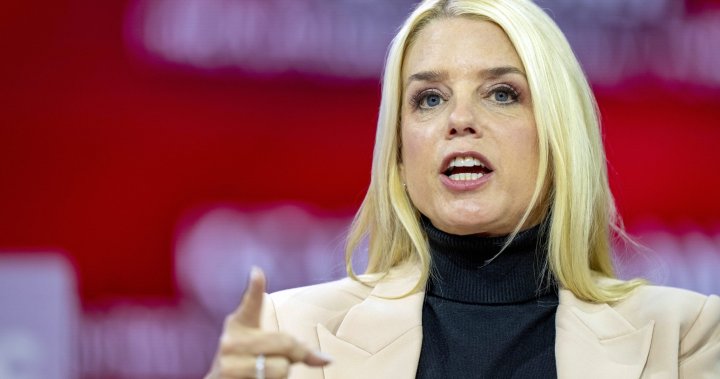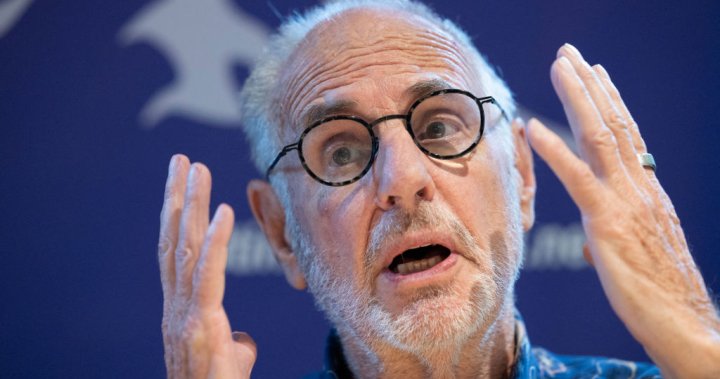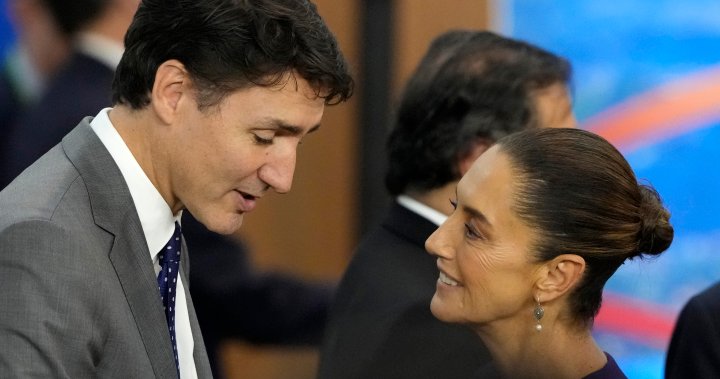News of Donald Trump’s victory in the US presidential election this week sparked a wave of memories for Jean Simard, president and CEO of the Canadian Aluminum Association.
“We’ve been playing in this movie for several years,” he told Global News.
Simard points to Trump’s first term, when the controversial Republican president in 2018 imposed tariffs of 10 per cent on Canadian aluminum and 25 per cent on steel. At the time, tariffs drove up global prices for these goods and ended up hurting businesses on both sides of the border who were forced to face higher costs or go out of business.
This time, Simard fears that Trump will be emboldened by his familiarity with the Oval Office and adopt an “accelerated” policy agenda that will make the returning president act more quickly to enact a “very protectionist agenda.”
Story continues below ad
“We realize that the agenda is America first, which means no friends or allies,” he says.

Here’s the “simple slogan” by which Trump says he will govern
But some industry representatives who spoke to Global News on Thursday say they see a path through Trump’s tariff threats and room to carve exemptions into the U.S. strategy to recognize that manufacturing and resources in Canada could be critical to U.S. growth priorities.
“The route is still very dangerous and uncertain at this point in time,” Simard says.
Team Canada is rallying for Trump’s presidency
In the days after it became clear that Trump would return to the White House in 2025, Ottawa began mobilizing resources to prepare for his second term.
Story continues below ad
Prime Minister Justin Trudeau announced Thursday that he has reconstituted the Cabinet Committee on Canada-US Relations in light of Trump’s victory.
Finance Minister and Deputy Prime Minister Chrystia Freeland will once again chair the committee, a role that saw her lead Canada’s renegotiation of the North American Free Trade Agreement during Trump’s first term.
Freeland was in Toronto on Thursday to meet with representatives of the Canadian steel industry to discuss the ramifications of the election.

Get daily national news
Get the day’s top political, economic and current affairs news, headlines, delivered to your inbox once a day.
During the election campaign, Trump threatened to impose sweeping tariffs of 10% or more on all goods coming into the United States, while imposing tougher trade restrictions on Chinese goods. He also said he would look to renegotiate the Canada-United States-Mexico Agreement (CUSMA), which will replace the North American Free Trade Agreement (NAFTA). The trade agreement is scheduled to be renegotiated in 2026.

What economic impacts could the US election have on Canada?
Catherine Cobden, president and CEO of the Canadian Steel Producers Association, says there is “a lot at stake” for the country if the steel industry faces another round of tariffs like those imposed in 2018.
Story continues below ad
Canada’s steel sector employs approximately 123,000 people directly or indirectly, according to CSPA estimates. There are only two markets for Canadian steel, Canada and the United States, with about half of domestic production sent south of the border.
Canada’s 2018 tariffs were lifted after just one year, which Cobden says reflects how dangerous those trade barriers are to both economies.
“The steel tariffs between the U.S. and Canada, we’re so integrated, they’re really ineffective and hurt both sides,” she says.
Some economists have suggested that trade policies aimed at boosting US manufacturing output by imposing tariffs on Canadian goods could backfire on the United States, given how interconnected North American supply chains have become.
An analysis by economist Trevor Tombe of the University of Calgary in October noted that many goods, especially in the automotive sector, cross between Canada and the United States several times over the course of the manufacturing process, with multinational automakers relying on a porous cross-border assembly line. . .
A TD Bank’s report was released last month He argued that Canada should be able to avoid across-the-board tariffs under a Trump presidency because of the “potential that tariffs will slow the U.S. economy, disrupt supply chains, and stoke inflation.”
Simard says it’s not yet clear what form the proposed tariffs would take, whether they apply to all goods entering the U.S. indiscriminately or instead take the form of lifting existing exemptions on Canadian aluminum and steel.
Story continues below ad
TD projected that a worst-case scenario that sees the United States impose 10 per cent tariffs across the board would see Canada’s real GDP fall by 2.4 percentage points over two years compared to the baseline scenario.
But Simard believes the US growth strategy will only increase demand for precious metals over the next decade, and Canada remains the logical source.
“The choice is between Canada, Middle Eastern countries or India. Take your pick. I believe Canada is still the preferred supplier for all American industries.”
Trending now
-
![]()
Read the text of Kamala Harris’s concession speech after losing the election
-
![]()
A Bank of Canada official warns of the risks of “adjustment” in mortgage rules
Can Canada position itself as a reliable partner?
Brian Kingston, CEO of the Canadian Automobile Manufacturers Association, says this interconnectedness of North American auto supply chains is a reason for optimism in the face of Trump’s threats.
“Parts and components in the automotive supply chain move back and forth across borders multiple times before they end up in a finished vehicle. Obviously, enforcing tariffs is going to be very difficult,” says Kingston.
Story continues below ad
Canada and the United States have so far demonstrated shared priorities as global trade flows shift — specifically against China. The two countries imposed 100% tariffs on Chinese-made electric cars, and Canada also imposed 25% tariffs on Chinese steel and aluminum.

Canada intends to impose an additional 25% tax on selected Chinese-made steel and aluminum products
Cobden says there’s a lot more the steel industry needs to do to improve the reliability of Canada’s supply chain, but he sees recent moves like Chinese tariffs and efforts to boost transparency in steel supply as “aligned” between the two trading partners.
“I remain really hopeful that all of this work will help us continue to demonstrate to the United States that we are a fair trading partner and have many of the same concerns about unfair traders in our market, and that we are stronger working together than working.” “At odds with each other,” she says.
Kingston believes that the efforts made by the United States to “decouple” from China are creating a situation in which Canada can play a role, especially in the field of electric vehicle production. It urges Canadian governments to accelerate operations on mining infrastructure to show the United States that the domestic industry is ready to rise to the moment.
Story continues below ad
“If the Trump administration moves more aggressively in its approach to China, Canada is ideally positioned to be that strong partner and ally and to help that shift happen. So I think there is an opportunity.”
“If we combine that with efforts to increase our mining capacity and be the supplier of choice for Americans, I think we can come out of this in a much better position.”
Simard says he has been in talks with government officials and industry players for weeks in preparation for a potential Trump presidency. He says he has been “very active” in speaking with Freeland and Canada’s ambassador to the U.S. to ensure the aluminum industry has a “seat at the table” when negotiations on tariffs and CUSMA begin under a second Trump term.
“Team Canada is back, and we have to do it in a unified, non-partisan way that includes unions, workers, communities, everyone,” says Simard. “It’s very important. And we don’t have a second kick in the can.”

Canadian ambassador to US warns Trump’s proposed tariffs will make it ‘very difficult’ for Canadians



















